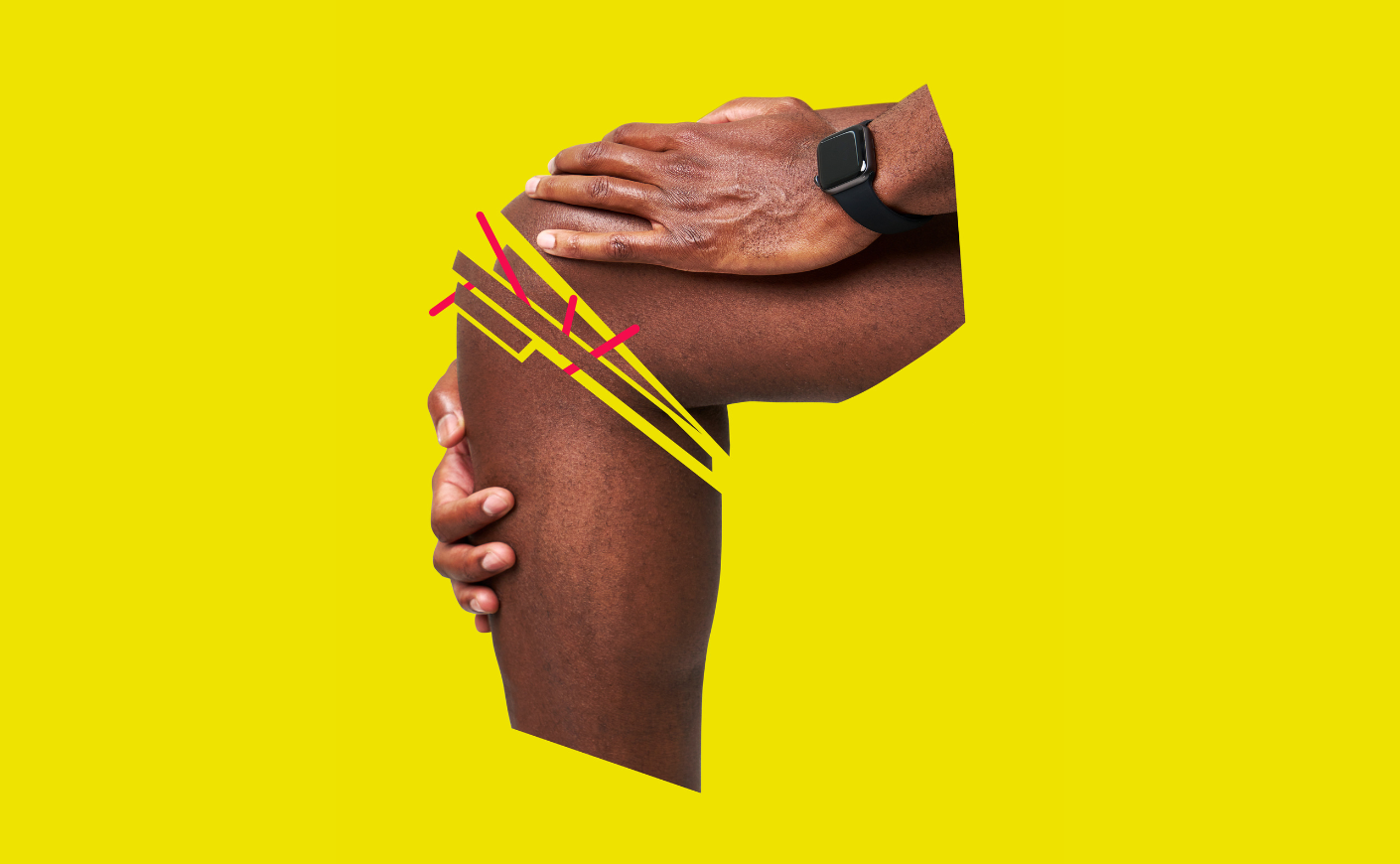If you have joint pain and stiffness in your legs or feet, you might have just accepted it as something you have to live with. And if it’s slowly but persistently worsened over the course of months or years, you may not even remember what it feels like to move without pain. If this sounds like you, listen up: Being in constant pain is not a “natural part of aging,” and what you’re feeling could be a sign of arthritis.
Arthritis is underdiagnosed, especially in the early stages, as many adults either dismiss joint soreness as normal or write it off as a temporary side effect of overuse. But if left untreated, arthritis will only get worse — and can lead to permanent damage that hinders mobility and independence. Staying active and maintaining independence as we age is crucial not just for physical health, but also emotional well-being, which is why there’s no time like the present to stop arthritis pain in its tracks. That’s why we spoke with Lauren Powell, MD, about what can happen to your overall health if you ignore the signs of arthritis, and how alleviating stress on your joints starts from the ground up.
What is arthritis?
A joint, the point at which two or more bones meet, is full of cartilage, a smooth connective tissue that keeps the bones from rubbing against each other. “When there’s wear and tear on joints,” says Dr. Powell, “cartilage begins breaking down and the cushion is removed, causing tenderness and inflammation where the bones meet.”
Cartilage breaks down from prolonged joint use, so it’s natural that arthritis is more common among older adults. It can also develop after an injury, and some people are genetically predisposed to arthritis or can develop it from an autoimmune disorder. “If you were a serious athlete when you were younger, or had a job that required intense physical activity and stress on your joints, you might be more likely to get arthritis later in life,” says Dr. Powell.
What are the symptoms of arthritis?
Arthritis is most common in the hands, knees, hips, and back, although it can happen anywhere you’ve got a joint. “It can present in a variety of ways,” Dr. Powell explains. “Obviously there’s swelling and pain at the joint itself, but some people will feel pain in areas near the joint. So some patients will come in with knee or ankle pain, when in reality they’re dealing with arthritis in their feet.”
Dr. Powell spoke with one patient who explained why she doesn’t like walking: “She said, ‘When I go on a long walk, the next day I’m in so much pain I can’t get out of bed.’ When I told her that wasn’t normal, she said it was normal for her, because she’d felt this way for years and could generally function fine. Sometimes it helps to reframe the question for yourself: Are there activities you see people your age doing, like playing on the ground with a grandchild, that you can’t do? And if so, how can we fix that?”
How can arthritis affect your overall health?
Arthritis pain can lead to a vicious cycle that impacts all areas of your life. “If your feet or knees hurt when you exercise, you’re going to stop doing it,” says Dr. Powell. “If you stop exercising, your flexibility decreases, and your tendons tighten, which can add more stress to the joints, which then causes even more pain.” Cutting back on exercise can also contribute to issues like heart disease and bone density loss, especially in women.
How does foot alignment and posture impact arthritis?
When your hips, knees, or feet are misaligned, that can put undue stress on other joints when they try to overcompensate. “If you have issues with your gait, it can impact the joints above and below,” Dr. Powell says. “So what once was an issue with your foot is now impacting your ankle or your hip.” Alignment problems can also lead to balance issues, particularly among older adults. “If you feel unbalanced and you’re afraid you’re going to fall, that also might dissuade you from exercising,” she says.
How can personalized arch supports help alleviate arthritis pain?
Whether you’ve got high arches, fallen arches, or something in between, everyone’s foot anatomy is slightly different. “Personalized arch supports, like those from The Good Feet Store, can help realign your feet in a way that will take the pressure off the impacted joints, which can help alleviate pain and help you regain balance and control,” says Dr. Powell.
The main consideration when looking for arch supports is getting inserts that meet both your specific needs and your specific lifestyle. At The Good Feet Store, foot support isn’t one-size-fits-all — it’s a personalized, three-step system designed to match your unique needs and lifestyle, and to move your feet back to their ideal alignment. It starts with the Strengtheners, personalized arch supports that activate and retrain the muscles in your feet, helping to realign them into their ideal position — think of this as a workout for your arches. Once your feet are properly positioned, you’ll move on to the Maintainers, which provide all-day comfort and stability to keep everything in place. And when it’s time to rest, the Relaxers offer gentle support to help your feet recover.
When taken together, the three-step system slowly guides your feet back into alignment, helping you regain strength and stability. While joint replacement is the only definitive treatment to undo damage caused by arthritis, personalized arch supports are an extremely effective, non-invasive alternative that can relieve joint pressure. When your feet are properly aligned, you can get back to doing the activities that will help you rebuild muscle, which will then provide even more support for your joints.
Who can benefit from personalized arch supports?
While essentially anyone can benefit from The Good Feet Store’s Three-Step Arch Support System, Dr. Powell says she recommends it to patients who feel any degree of joint discomfort is keeping them from engaging in their regular physical activity. “The most important thing is to be consistent in wearing them,” she explains. “At first it can be a bit challenging, because they’re working to slowly realign your feet to their proper position, and that can be slightly uncomfortable, since it’s not what you’re used to. But if you wear them as instructed, they can make a huge difference, and many of my patients say they no longer need to pop pain relievers to get through the day.”
What else can you do to stop arthritis pain?
Proper arch support is just one tool in the arsenal of arthritis pain management. Another crucial component, explains Dr. Powell, is hydration: “Think about how much of our body is made up of water,” she says. “When you’re dehydrated, it can exacerbate aches and pains even further.” A layer of fluid cushions the joints, working with cartilage as a shock absorber. When you’re dehydrated, that friction can increase.
Dr. Powell specializes in the connection between food and overall health, and she suggests incorporating anti-inflammatory foods into your diet to help with arthritis pain. “Spices like turmeric and cinnamon, ginger, and garlic are great natural anti-inflammatories,” she says. “Try to add these into your diet wherever you can.” And one thing Dr. Powell urges you to cut out of your diet? “Soda,” she emphasizes. “It’s full of sugar, which can cause inflammation and worsen arthritis pain. Plus, it’s highly addictive.”
When should you see a doctor?
If pain keeps you from living your life, that should be the warning bell that it’s time to get some help. “Arthritis develops slowly,” explains Dr. Powell. “And for many people, arthritis pain is worse in the morning, because you haven’t been using those joints all night. So if someone tells me their legs or feet hurt when they first get out of bed, that’s a sign that something isn’t right.”
“Some people will chalk arthritis pain up to the normal aging process, but many people age without any pain at all,” says Dr. Powell. “If you’re in so much pain you can’t walk around the block, you’re only hurting yourself if you ignore it. If you’re constantly uncomfortable at 60 — with potentially 40 years of life ahead of you — that’s not something anyone should be willing to put up with.” If that description sounds like you, you don’t have to just deal with the pain. Simple fixes, like getting personalized arch supports, can mean the difference between limping through life and striding into it.









